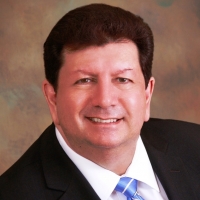Why are most regional centers located in Targeted Employment Areas? Is a regional center required to to be located within a TEA? What are the geographic requirements for becoming a regional center?
Answers

A Olusanjo Omoniyi
EB-5 Immigration attorneysThere are no geographic requirements for establishing a regional center. While your observation is correct that most regional centers are in TEAs, there is no requirement that they must be located in TEAs. In actuality, the establishment of an regional center depends on the plans and decisions of its planners and founders.

Julia Roussinova
EB-5 Immigration attorneysA regional center located within a TEA allows for a reduced investment amount of $500,000. They are not required to be in a TEA; however, to qualify for a reduced investment amount and thus be more competitive, a job creating enterprise must be within a TEA or rural area.

Salvatore Picataggio
EB-5 Immigration attorneysRegional Centers are not necessarily in TEAs, but the projects themselves are located in TEAs, which allow for the reduced investment amount. With as many EB-5 projects in the marketplace in TEAs as there are, having one requiring the full $1 million investment can be a tough sell.

John J Downey
EB-5 Immigration attorneysYou do to have to locate specifically in a TEA to qualify as a regional center. However, if you wish to attract $500,000 investors you should include a TEA area. The USCIS publishes guidelines for regional center applications. You should read and adhere to those.

Ed Beshara
EB-5 Immigration attorneysA regional center will cover a certain geographical area. Within this geographical area there will be locations that are TEAs. The job creating entities are required to be in TEAs if the investment requirement is to be $500,000.

Shahzad Q Qadri
Creating EB-5 Regional CentersThere really are not any geographic limitations; however, we have seen a reluctance by the DHS to allow multi-state regional centers. The regional centers are not required to be within a TEA; the regional center can encompass an area that is a TEA. There are numerous advantages to having a TEA, as that reduces the requisite investment.

Fredrick W Voigtmann
EB-5 Immigration attorneysRegional centers are not required to be in a TEA. TEA investments, whether in a regional center or not, require only $500,000, not $1 million. It is much easier to market a $500,000 investment. That is why most regional centers are also in TEAs. As for geographical requirements, there are regional centers as small as a small county and as large as an entire state. The regional center would show data to prove the positive economic effects their project(s) will have on the regional economy and therefore, justify the geographic boundary for the regional center.

Denyse Sabagh
EB-5 Immigration attorneysThe reason most regional centers are in TEAs is because the investment is $500,000 instead of the required $1 million. It is not a requirement that regional centers be located in a TEA. However, they are more competitive because the investment is lower.

Anthony Korda
EB-5 Immigration attorneysThere are no specific geographic requirements for becoming a regional center. However, the territory applied for must have a nexus with the project(s). Although most regional centers have Targeted Employment Areas, there are very few that qualify in their entirety and there is no requirement that a regional center project must be located within a TEA. However, in practice, most regional center projects locate within a rural area or a TEA in order to take advantage of the reduced investment amount ($500,000), as it is often difficult to market a $1 million investment.
DISCLAIMER: the information found on this website is intended to be general information; it is not legal or financial advice. Specific legal or financial advice can only be given by a licensed professional with full knowledge of all the facts and circumstances of your particular situation. You should seek consultation with legal, immigration, and financial experts prior to participating in the EB-5 program. Posting a question on this website does not create an attorney-client relationship. All questions you post will be available to the public: do not include confidential information in your question.






